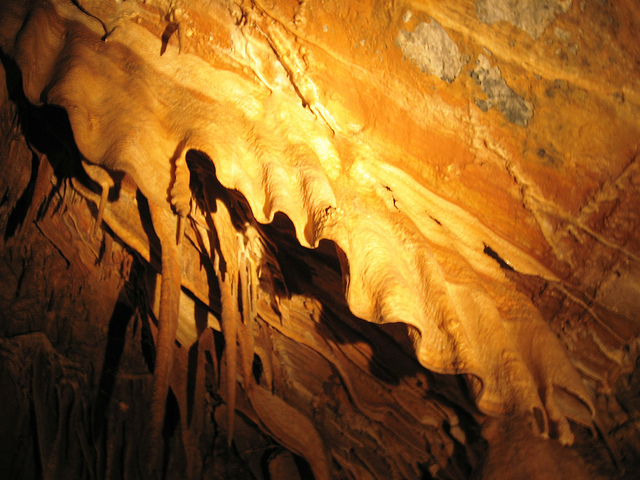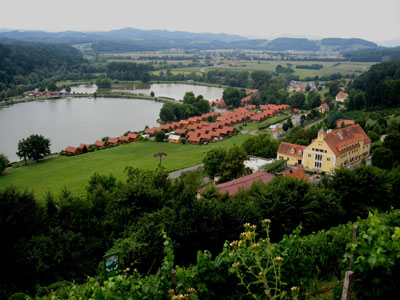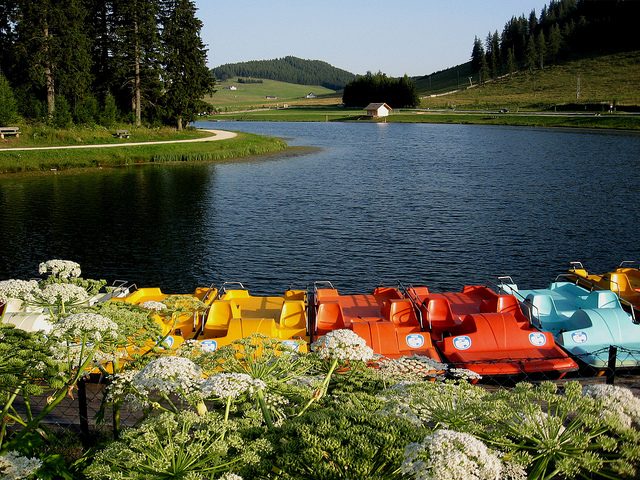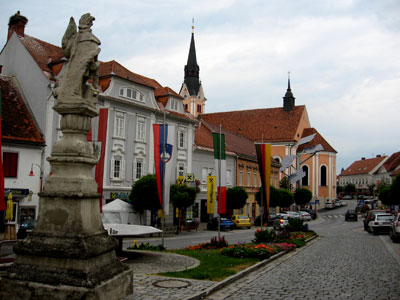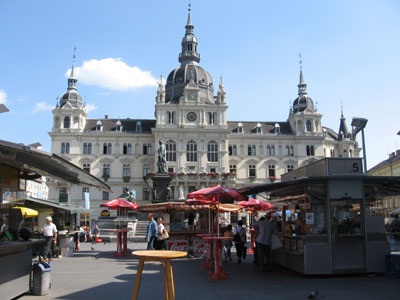Past the gorge there is a fork in the road: on the left side you will reach the country village of Passail, and on the right side you continue beside the river to a small hamlet called Schmied in der Weiz. I turned right and decided to take a steep country road up to the mountain village of St. Kathrein am Offenegg, a popular tourist destination with several hotels, restaurants and bed and breakfasts.

The parish church of St. Kathrein am Offenegg
St. Kathrein offers many hiking trails, an educational forest trail, a publicly accessible herb garden as well as skiing in the winter. Settled already in Celtic-Nordic times, German settlers moved into the area in the 11th century. A church was mentioned as early as 1295 and the current church was modified and enlarged several times over the centuries. I walked around and into this small country church which is surrounded by a cemetery and offers a beautiful view westwards towards the Passail Basin.

Graveyard in St. Kathrein
After a lovely lunch at my friend Andrea’s place, her whole family and I embarked on another adventure: a guided tour of the “Katerloch”, a limestone cave that features the largest number of dripstones in all of Austria. Following a beautiful 15 minute drive through serene rolling hills surrounding the hamlet of Dürntal we arrived at the entrance of the cave.

Entrance to the Katerloch cave
A group of about 20 or 25 people was already waiting, and the owner of the cave, a young man by the name of Fritz Geissler, was ready to take us on our guided tour. At 30 Euros, the guided tour is not exactly an inexpensive venture, but Fritz explained to us that the upkeep of the cave is costly and the price acts as an important filter that keeps out undesirable visitors who might not have a real interest in this natural wonder. His concerns are justified since over the last decades visitors have done considerable damage to the cave and broken off dripstones to take home as a souvenir.

Fritz Geissler explains the exploration of the cave
We started to congregate at the entrance of the cave and Fritz explained that the name of the cave “Katerloch” is composed of the term “Eulenkater” (a male owl) and “Loch” (hole), indicating that owls inhabit this cavern and regularly fly in and out of the cave, particularly from fall to spring. Right at the entrance we saw a limestone stone column that measured 22 meters in height with a circumference of 46 meters. Fritz would lead the way and the crowd would follow single file on the narrow pathways and steep metal ladders that connect the different sections of the cave.

Descending into the cave on steep trails
Fritz explained that the former owners and explorers of the cave were a married couple by the name of Hermann and Regine Hofer. The couple had arrived from out of town at the cave in 1951 after an extended honeymoon and settled to modernize another limestone cave nearby – the “Grasslhöhle”. With admission revenues from the other cave, Hermann and Regine Hofer were able to pay for the exploration of their beloved Katerloch which became their life-long project. Between the years 1952 and 1955 the couple discovered different portions of the cave, started to excavate tunnels and connection points and initiated the electrification of the cave.

The Hall of Phantasy
Fritz told us about the tedious, backbreaking and cumbersome work that was involved in making this cave accessible to the public. Each of the 400 concrete steps leading 135 metres down into the mountain had to be hand-built and the cement had to be carried in by the bucket through narrow passageways. New openings into other caverns were detected by means of candlelight whose flickering indicated that there was air movement and a potential connection into another, as yet undiscovered part of the cave.

Remembrance of a bishop’s visit of the cave
